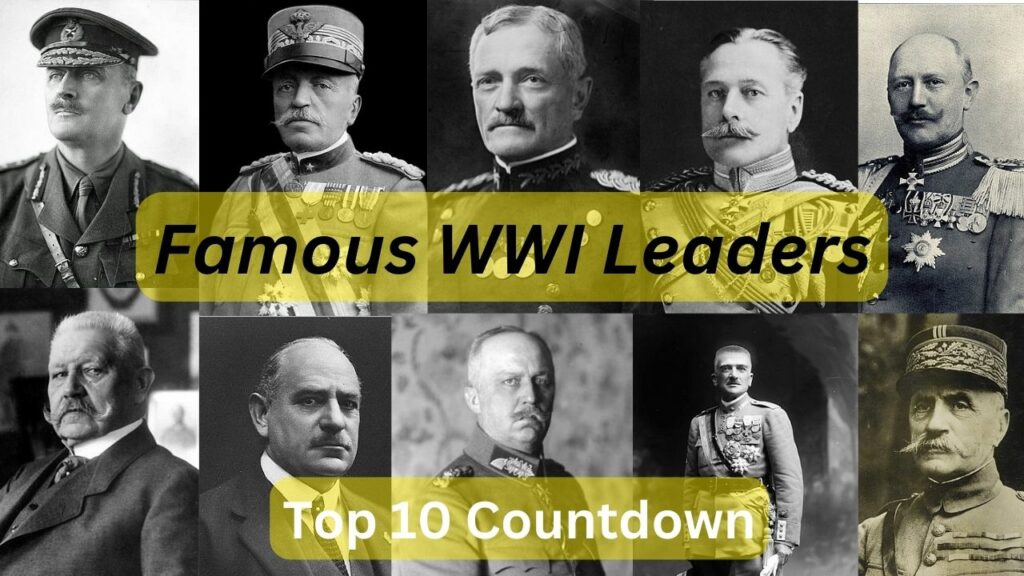
Our top 10 countdown of famous generals of WWI has only one name from the USA. World War I, which lasted from 1914 to 1918, featured several notable generals who played significant roles in the conflict. While it’s difficult to rank them definitively, here’s a list of ten prominent generals from various countries who made important contributions during World War I:
Here is an overview of the famous generals of WWI
- Field Marshal Sir Douglas Haig (United Kingdom) – Haig was a stoic British commander known for his unyielding leadership during the Battle of the Somme, where his relentless determination to break the enemy lines became legendary.
- General Ferdinand Foch (France) – Foch’s remarkable rise to become the Supreme Allied Commander is a tale of strategic brilliance and international cooperation, leading to his central role in the coordination of Allied forces in the war’s crucial final stages.
- Field Marshal Paul von Hindenburg (Germany) – A mastermind behind Germany’s early victories, Hindenburg’s meteoric success and later partnership with Erich Ludendorff helped shape the Central Powers’ strategy during the conflict.
- General Erich Ludendorff (Germany) – Ludendorff, the architect of the 1918 Spring Offensive, was a strategic genius whose audacious plans kept the world on edge as he sought to turn the tide of the war.
- General John J. Pershing (United States) – The tenacious leader of the American Expeditionary Forces, Pershing’s relentless pursuit of victory on the Western Front and his distinct Stetson hat became synonymous with American involvement in the war.
- Field Marshal Sir Edmund Allenby (United Kingdom) – Allenby’s daring campaigns in the Middle East, including the capture of Jerusalem on horseback, earned him a reputation as one of the most dynamic generals of the era.
- General Luigi Cadorna (Italy) – Cadorna’s audacious approach to leading the Italian Army, often marked by relentless offensives, kept the Italian Front in constant turmoil and raised his profile as a formidable commander.
- General Helmuth von Moltke the Younger (Germany) – As Chief of the German General Staff in the war’s early years, Moltke played a pivotal role in shaping Germany’s military strategy and had the weight of an empire on his shoulders.
- General Armando Diaz (Italy) – Diaz’s heroic feats on the Italian Front, including the Battle of Vittorio Veneto, showcased his prowess as a commander and helped secure Italy’s place among the victorious Allies.
- General John Monash (Australia) – Known for his tactical brilliance, Monash led the Australian Corps to awe-inspiring victories on the Western Front, becoming a beacon of excellence and innovation in the field of battle.
Let the countdown begin of famous WWI generals:
10. General John Monash (Australia)
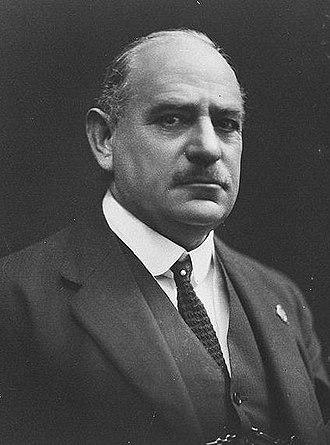
General John Monash, an iconic military leader, was born in Jerilderie, New South Wales, Australia, on June 27, 1865. He was known for his innovative and highly successful approaches to warfare during World War I.
10 Interesting Facts about General John Monash:
- Engineer Turned General: Monash, a civil engineer by profession, applied his innovative mindset to the battlefield, making him one of the most forward-thinking generals of the war.
- Tactician Extraordinaire: He introduced new tactics, including the use of combined arms and infantry coordination, leading to decisive victories on the Western Front.
- Battle of Hamel: Monash’s meticulously planned Battle of Hamel in 1918, involving American, British, and Australian forces, is considered a textbook example of modern warfare and lasted only 93 minutes.
- Diverse Leadership: He promoted an inclusive leadership style, valuing the contributions of soldiers from diverse backgrounds, which helped foster a cohesive fighting force.
- Military Innovator: Monash was among the first to employ tanks, aircraft, and wireless communication effectively in warfare, revolutionizing military strategies.
- Australian Corps Commander: He rose to command the Australian Corps, and his dynamic leadership earned him the title of “The Knight of the Iron Cross.”
- Recognition: Monash was knighted in 1918 and became the first general in the British Empire to attain knighthood during World War I.
- Post-war Contributions: After the war, Monash played a key role in reorganizing the Australian Army and contributed to the development of veteran welfare programs.
- Legacy: He remains a revered figure in Australian military history, and Monash University in Melbourne is named in his honor.
- Honoring His Memory: Every year, the Sir John Monash Stakes horse race is held in Australia to commemorate his legacy.
Conclusion:
General John Monash, a brilliant strategist and a charismatic leader, left an indelible mark on the annals of military history. His innovative approach to warfare, inclusive leadership style, and significant contributions to the Allied cause during World War I ensure his enduring legacy as one of the most remarkable generals of the era.
9. General Armando Diaz (Italy)
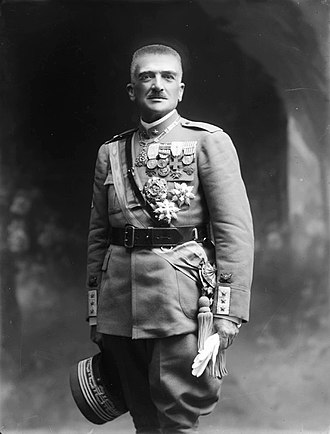
General Armando Diaz was born in Naples, Italy, on December 5, 1861. He is celebrated for his leadership of the Italian Army during World War I and his role in the victory at the Battle of Vittorio Veneto.
10 Interesting Facts about General Armando Diaz:
- Battle of Vittorio Veneto: Diaz’s leadership in the Battle of Vittorio Veneto in 1918 marked a turning point in the war, leading to the collapse of the Austro-Hungarian Empire.
- Italian Front Commander: He succeeded Luigi Cadorna as the Chief of Staff and Commander-in-Chief of the Italian Army.
- Promotion to Marshal: After the victory at Vittorio Veneto, Diaz was promoted to the rank of Marshal of Italy.
- End of World War I: Under Diaz’s command, Italy became one of the victorious Allied powers at the end of World War I.
- Respected Leadership: Diaz was highly respected by his troops for his tactical skill and his commitment to their welfare.
- Post-War Political Role: After the war, he briefly served as Italy’s Minister of War before retiring from the military.
- Veteran Support: Diaz actively supported veterans’ rights and welfare in post-war Italy.
- National Hero: He is considered a national hero in Italy, and the town of Vittorio Veneto was renamed in his honor.
- Medals and Honors: Diaz received numerous military decorations and honors for his contributions.
- Legacy: General Armando Diaz remains an iconic figure in Italian military history and a symbol of Italian resilience during World War I.
Conclusion:
General Armando Diaz’s leadership and strategic prowess played a crucial role in Italy’s success on the Italian Front during World War I. His finest hour came with the victory at the Battle of Vittorio Veneto, which ultimately contributed to the collapse of the Austro-Hungarian Empire. Diaz’s legacy endures as a symbol of Italian military achievement and national pride.
8. General Helmuth von Moltke the Younger (Germany)
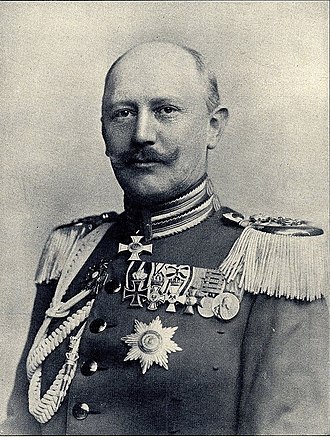
General Helmuth von Moltke the Younger, born on May 25, 1848, in Parchim, Prussia, is remembered for his role as Chief of the German General Staff during the early phases of World War I.
10 Interesting Facts about General Helmuth von Moltke the Younger:
- Early Career: Moltke’s military career began in the Prussian Army, and he gained experience in various staff positions.
- Chief of the General Staff: He assumed the role of Chief of the German General Staff in 1906, succeeding Alfred von Schlieffen.
- Strategic Planning: Moltke was responsible for implementing the Schlieffen Plan, which aimed to secure a swift victory on the Western Front through Belgium.
- Early Successes: Under his leadership, German forces achieved significant victories in the early stages of the war, including the Battle of Tannenberg.
- Challenges on the Western Front: Moltke’s challenges included adjusting to the evolving situation on the Western Front and coordinating the vast German Army.
- Resignation: Due to the immense pressures and challenges of the war, Moltke resigned as Chief of the General Staff in 1914.
- Later Service: He continued to serve in various capacities in the German Army but did not hold another high-profile command.
- Historical Debate: Moltke’s role in the Schlieffen Plan’s implementation and the subsequent events of the war remain topics of historical debate.
- Post-war Life: After World War I, Moltke retired from the military and lived a private life.
- Legacy: Helmuth von Moltke the Younger’s legacy is intertwined with the complex and controversial early stages of the war and the strategies that shaped its course.
Conclusion:
General Helmuth von Moltke the Younger’s tenure as Chief of the German General Staff during World War I was marked by significant successes and challenges. His role in implementing the Schlieffen Plan and the subsequent adaptation of German strategy on the Western Front remains a subject of historical interest and debate.
7. General Luigi Cadorna (Italy)

General Luigi Cadorna, born on September 4, 1850, in Pallanza, Italy, is renowned for his leadership of the Italian Army during World War I and his involvement in the Italian Front’s campaigns.
10 Interesting Facts about General Luigi Cadorna:
- Commander of the Italian Army: Cadorna served as the Chief of Staff of the Italian Army, and his leadership played a central role in Italy’s participation in World War I.
- Strategy on the Italian Front: He implemented a strategy that involved a series of costly offensives against Austro-Hungarian forces, which earned him both praise and criticism.
- Isonzo Battles: Cadorna is associated with the Isonzo Battles, a series of eleven battles along the Isonzo River, which were marked by heavy casualties.
- Resilience and Determination: Despite the challenges, Cadorna’s determination to secure territorial gains for Italy remained steadfast.
- Promotion to Marshal: He was promoted to the rank of Marshal of Italy in 1917.
- Italian Front’s Vital Role: The Italian Front represented a significant theater of operations during World War I, with Cadorna as a key figure.
- Post-war Criticism: Cadorna faced criticism for the high casualties and slow progress in his offensives.
- Historical Debate: His leadership style and strategies remain topics of historical debate and discussion.
- Legacy: General Luigi Cadorna’s legacy reflects the complexities of the Italian Front and the challenges Italy faced during World War I.
- Military Reforms: Cadorna was involved in post-war military reforms and contributed to the modernization of the Italian Army.
Conclusion:
General Luigi Cadorna’s leadership during World War I was marked by the distinctive nature of the Italian Front and the strategies he employed. His enduring legacy is intertwined with the difficulties and complexities of the theater he commanded.
6. Field Marshal Sir Edmund Allenby (United Kingdom)
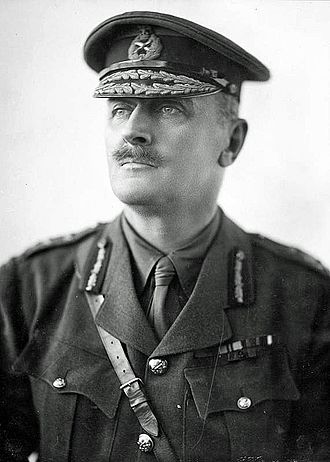
Field Marshal Sir Edmund Allenby was born on April 23, 1861, in Brackenhurst, Nottingham, United Kingdom. He is celebrated for his outstanding campaigns in the Middle Eastern theater during World War I.
10 Interesting Facts about Field Marshal Sir Edmund Allenby:
- Conquest of Jerusalem: Allenby’s leadership in the successful capture of Jerusalem in 1917 marked a pivotal moment in the war and earned him international acclaim.
- Battle of Megiddo: The Battle of Megiddo in 1918, led by Allenby, was a decisive victory that contributed to the collapse of the Ottoman Empire.
- Versatile Military Leader: Allenby was known for his versatility, combining traditional and unconventional tactics in desert warfare.
- Respected by Troops: His troops held deep respect for him, and he was often referred to as “The Bull.”
- Post-war Service: After World War I, Allenby served as High Commissioner of Egypt and played a key role in shaping the region’s future.
- T.E. Lawrence (Lawrence of Arabia): Allenby collaborated with T.E. Lawrence in the Arab Revolt, leading to remarkable success against the Ottomans.
- Honors and Titles: He was awarded the title of Viscount Allenby of Megiddo and Felixstowe and received numerous honors for his contributions.
- Legacy: Allenby’s campaigns in the Middle East are considered textbook examples of successful desert warfare.
- Historical Importance: His campaigns reshaped the map of the Middle East and significantly influenced post-war geopolitics.
- Impact on British Empire: Field Marshal Sir Edmund Allenby left a profound mark on the British Empire’s legacy in the Middle East and the modern history of the region.
Conclusion:
Field Marshal Sir Edmund Allenby’s leadership in the Middle Eastern theater of World War I, particularly his conquest of Jerusalem and the Battle of Megiddo, showcased his exceptional military acumen and strategic brilliance. His post-war role in shaping the Middle East’s future adds another layer to his remarkable legacy.
5. General John J. Pershing (United States)
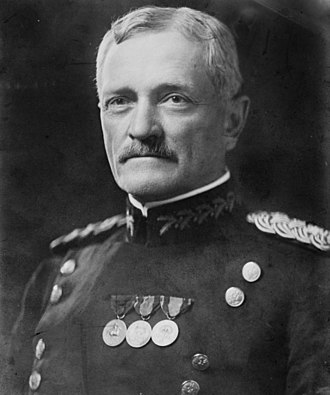
General John J. Pershing, born on September 13, 1860, in Laclede, Missouri, United States, is celebrated for his command of the American Expeditionary Forces and his significant contributions during the latter stages of World War I.
10 Interesting Facts about General John J. Pershing:
- American Expeditionary Forces: Pershing led the American Expeditionary Forces, which marked the first major deployment of U.S. troops to Europe in a world conflict.
- Trench Warfare: He played a crucial role in the adaptation of American forces to the trench warfare on the Western Front.
- Pershing’s Leadership Style: His no-nonsense, disciplined leadership style earned him the nickname “Black Jack.”
- Meuse-Argonne Offensive: The Meuse-Argonne Offensive in 1918, under his command, was the largest American military operation of World War I and a turning point in the conflict.
- National Hero: Pershing’s leadership turned him into a national hero in the United States.
- Allied Cooperation: He coordinated effectively with the Allied powers and contributed to the overall victory.
- Promotion to General of the Armies: He was promoted to the highest rank, General of the Armies, and remains one of the only individuals to hold this title.
- Post-war Leadership: After World War I, Pershing served as Chief of Staff of the U.S. Army and played a role in military reform and readiness.
- American Legion: He was a co-founder of the American Legion, an organization dedicated to the welfare of veterans.
- Legacy: General John J. Pershing’s leadership during World War I established him as a symbol of American military might and competence on the world stage.
Conclusion:
General John J. Pershing’s leadership of the American Expeditionary Forces marked a pivotal moment in U.S. military history. His remarkable achievements on the Western Front and his post-war contributions to the U.S. military underscore his enduring legacy as one of the most influential figures of the era.
4. General Erich Ludendorff (Germany)
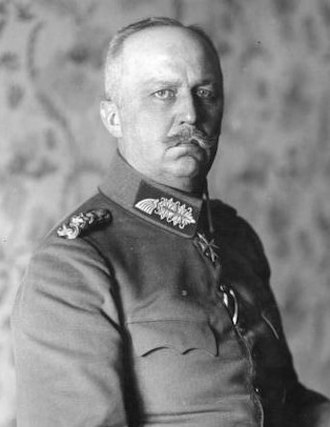
Introduction: General Erich Ludendorff, born on April 9, 1865, in Posen, Prussia (now Poznań, Poland), is celebrated for his instrumental role in shaping German military strategy during World War I.
10 Interesting Facts about General Erich Ludendorff:
- Partnership with Hindenburg: Ludendorff formed a formidable partnership with Field Marshal Paul von Hindenburg, which had a profound impact on the Central Powers’ military strategy.
- Tactical Innovation: He was a mastermind of innovative tactical planning, particularly during the 1918 Spring Offensive.
- 1918 Spring Offensive: Ludendorff’s strategies during the Spring Offensive sought to break the stalemate on the Western Front, though they ultimately failed.
- Operation Michael: The opening operation of the Spring Offensive, known as Operation Michael, was one of Ludendorff’s boldest moves.
- Influence on German Strategy: He played a key role in developing and implementing the Schlieffen Plan and the subsequent modification of German strategy on the Western Front.
- Chief of the German General Staff: Ludendorff served as the Chief of the German General Staff during a critical phase of the war.
- Treaty of Brest-Litovsk: He played a pivotal role in the negotiations of the Treaty of Brest-Litovsk with Soviet Russia in 1918.
- Political Involvement: Ludendorff was briefly involved in German politics during the turbulent post-war period.
- Memoirs: He wrote memoirs and historical accounts of his experiences during World War I.
- Historical Assessment: General Erich Ludendorff’s military strategies and post-war involvement continue to be the subject of historical debate and analysis.
Conclusion:
General Erich Ludendorff’s contributions to the German war effort, particularly his strategic innovations and partnership with Hindenburg, played a significant role in shaping the course of World War I. His post-war involvement and historical impact add layers to his complex legacy.
3. Field Marshal Paul von Hindenburg (Germany)
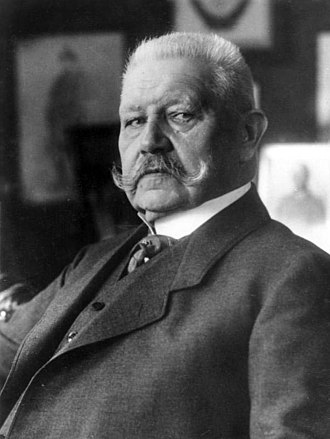
Field Marshal Paul von Hindenburg, born on October 2, 1847, in Posen, Prussia (now Poznań, Poland), is renowned for his strategic brilliance and leadership during the early stages of World War I.
10 Interesting Facts about Field Marshal Paul von Hindenburg:
- Early Career: Hindenburg had retired from the military but was recalled to serve as a field commander at the outbreak of World War I.
- Tannenberg Victory: He achieved a decisive victory over the Russian Army at the Battle of Tannenberg in 1914.
- Partnership with Ludendorff: Hindenburg formed a formidable partnership with Erich Ludendorff, which had a significant impact on the Central Powers’ strategy.
- East and West Fronts: He commanded on both the Eastern and Western Fronts, contributing to Germany’s military successes.
- Appointment as Chief of the General Staff: Hindenburg was appointed Chief of the German General Staff in 1916, where he played a critical role in directing military strategy.
- Tactical Innovation: His ability to adapt to the realities of trench warfare and new weapons technology was key to German military achievements.
- Promotion to Field Marshal: He was promoted to the rank of Field Marshal in 1914.
- Post-war Involvement: After World War I, Hindenburg served as President of the Weimar Republic, though his later political career is marked by controversy.
- Honors and Statues: Numerous memorials, statues, and honors are dedicated to Hindenburg, especially in Germany.
- Historical Debate: Hindenburg’s role in the German war effort and his later political actions remain subjects of historical debate and scrutiny.
Conclusion:
Field Marshal Paul von Hindenburg’s leadership, particularly during the early stages of World War I, stands as a testament to his strategic acumen and influence on the Central Powers’ strategy. His complex legacy continues to spark historical discussions and debates.
2. General Ferdinand Foch (France)
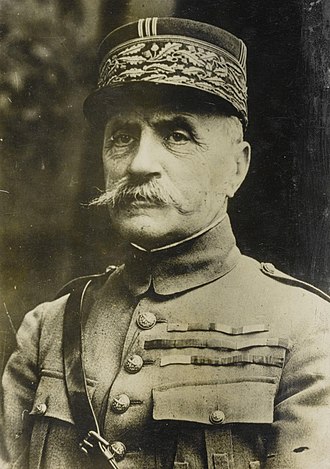
General Ferdinand Foch was born on October 2, 1851, in Tarbes, France. He gained international acclaim as the Supreme Allied Commander and played a pivotal role in coordinating the efforts of the Allied forces during World War I.
10 Interesting Facts about General Ferdinand Foch:
- Supreme Allied Commander: Foch was appointed Supreme Allied Commander in 1918, uniting the strategies of the Allied powers.
- Unified Command: His ability to forge cooperation among the Allies significantly contributed to victory.
- Foch’s Doctrine: He developed a military doctrine emphasizing offensive warfare and swift decision-making.
- Critical Moments: Foch played a key role in critical Allied offensives, including the Hundred Days Offensive that marked the end of the war.
- Versatile Leadership: He demonstrated adaptability in various roles, from the front lines to high command.
- Recognition: Foch was hailed as “The Savior of France” for his leadership during the Battle of the Marne in 1914.
- Promotion to Marshal: He was promoted to Marshal of France in 1918.
- Commemoration: Foch’s contributions are commemorated with the signing of the Armistice of Compiègne in 1918.
- Post-war Diplomacy: He participated in the post-war peace negotiations and is remembered for his involvement in the Treaty of Versailles.
- Legacy: General Ferdinand Foch’s legacy lies in his ability to coordinate Allied forces, implement innovative strategies, and contribute to the eventual Allied victory.
Conclusion:
General Ferdinand Foch’s appointment as Supreme Allied Commander and his role in shaping the cooperation of the Allied powers elevated him to a position of immense historical importance. His legacy endures as a symbol of effective multinational military coordination and leadership during World War I.
1. Field Marshal Sir Douglas Haig (United Kingdom)
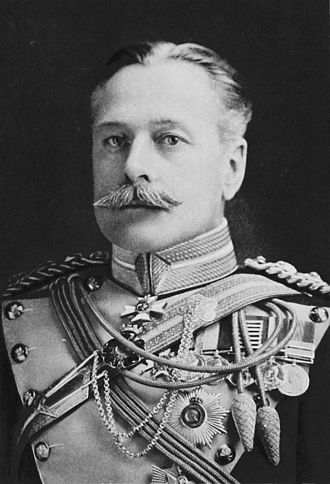
Field Marshal Sir Douglas Haig, born on June 19, 1861, in Charlotte Square, Edinburgh, United Kingdom, is celebrated for his unwavering leadership as the commander of the British Expeditionary Force during World War I.
10 Interesting Facts about Field Marshal Sir Douglas Haig:
- Commander of the BEF: Haig served as the commander of the British Expeditionary Force on the Western Front, facing the challenges of trench warfare.
- Battle of the Somme: Haig’s leadership during the Battle of the Somme, a defining moment in the war, was characterized by determination to break through enemy lines.
- Ypres and Passchendaele: He also played a central role in the battles at Ypres and Passchendaele.
- Tactical Adaptation: Haig made efforts to adapt British tactics and equipment to the realities of modern warfare.
- Historical Controversy: His decisions and the high casualty rates in British forces led to historical controversy and debate about his leadership.
- Promotion to Field Marshal: He was promoted to the highest military rank, Field Marshal.
- Post-war Advocacy: Haig was a prominent advocate for veterans’ rights and welfare after the war.
- Haig Fund: He established the Haig Fund (now known as Poppy Scotland), a charitable organization to support veterans.
- Legacy: Field Marshal Sir Douglas Haig’s legacy is multifaceted, characterized by both the perception of determined leadership and scrutiny of the high human cost of his strategies.
- The Haig Dossier: Historical documents such as “The Haig Dossier” continue to shed light on his decisions and leadership.
Conclusion:
Field Marshal Sir Douglas Haig’s leadership during World War I, particularly during the Battle of the Somme, left an indelible mark on the conflict. His legacy is complex, encompassing the accolades for his determination and the debate surrounding his strategic choices and their human toll.
You can read more Top 10 Countdown lists here.
